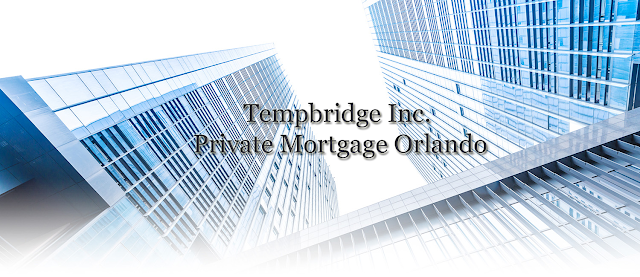From a September 20th article in Rebusiness on line
Regeneration of Retail Spurring New Development, Investment Activity in Orlando
Orlando’s retail market is experiencing renewed vigor. Construction cranes are rising in key areas due to increasingly high demand, and low vacancies are fueling rental rate growth, which has been somewhat stagnant over the last several years. There is also demand for larger vacated boxes as a result of the downsizing and bankruptcies of retailers. Spaces once occupied by Sears, Sports Authority and hhgregg, for example, are being filled by retailers entering or expanding their presence in the market, such as Lucky Market, Earth Fare, Orchard Supply, Ollie’s, 24 Hour Fitness and At Home. The activity is both resulting in and benefitting from exciting new developments and infrastructure improvements in the market.
Development, Infrastructure
Current development activity in Orlando is in direct response to considerable consumer demand, with many major retail projects recently completed or under construction. Lake Nona Landings, a 53-acre development in Tavistock’s master-planned Lake Nona community, opened in early 2017 with the area’s first Walmart Supercenter and Sam’s Club and will serve as an anchor for the growing Narcoossee corridor south of State Road 417.
Horizons West/Four Corners is a thriving residential area encompassing parts of western Orange and north Osceola counties where retail, restaurant and multifamily uses are breaking ground to keep pace with the growing demand for housing. Within the area, Boyd Development recently delivered a new 193,000-square-foot Walmart in a planned commercial and mixed-use project on the east side of State Road 429 at the New Independence Parkway interchange. A new campus for Orlando Health is underway nearby, and Unicorp National Developments is building Westside Shoppes, a 70,700-square-foot shopping plaza with a medical office building and adjacent multifamily housing development.
Vineland Pointe by Williams Co. Southeast is a planned 447,500-square-foot shopping development on a 64-acre site fronting Interstate 4 and is expected to break ground during the third quarter, with delivery sometime in 2018. Vineland Pointe will serve as a gateway development between International Drive and the retail in the Disney area, and will likely include off-price retailers like Ross or Marshalls, in addition to lifestyle retailers and amenities.
Multiple developments anchored by grocery/necessity-based retailers are in development around the metro area. Amazon’s recent acquisition of Whole Foods has reinforced the importance of having a brick-and-mortar presence and the attractiveness of grocery-anchored investments.
Disney Springs, formerly known as Downtown Disney, is a thriving entertainment complex that continues to reinvent itself, introducing innovative new dining and retail concepts and creating a unique entertainment and retailer mix not found elsewhere in the metro area. Five new restaurants were just announced in June that will open over the next year.
Significant roadway projects, including the $2.3 billion Interstate 4 Ultimate Project and transportation improvements such as the expansion of SunRail, are leading to sustainable growth in both infill and suburban areas along the eastern and western beltways. Additionally, a retailer’s ability to provide a critical omnichannel experience is of rising importance, and with its thriving logistics network, the Orlando area is well-positioned to effectively bridge the gap between the online platform and the brick-and-mortar footprint.
Investment Activity
The most dominant buyers in the greater Orlando market (including the Daytona Beach area) are REITs and private equity, along with Publix Super Markets, which often acquire centers in which it is an anchor tenant. Investors are becoming a bit more aggressive in seeking value-
add opportunities with solid upside potential near expanding retail areas. Primary sellers include REITs that are repositioning their portfolios, private equity — including entrepreneurial sellers that are taking advantage of an increasingly competitive market — and owners with maturing loans.
Necessity-based retail is driving both new development and investment transactions in metro Orlando, and Avison Young’s Florida Capital Markets Group has recently been involved in two of those transactions, one of which has closed and one that is under contract. The firm recently completed the $20.7 million disposition of Volusia Marketplace, a well-positioned, multi-anchored community shopping center in Daytona Beach, to a private equity buyer. Robust demand for space had driven the big box vacancy rate down significantly, mirroring the trend in the neighboring Orlando area, and investors were drawn to the center’s strong in-place income and long-term cash flow.
A total of 16 retail sales were concluded during the second quarter of 2017, accounting for just over 1.5 million square feet and $188 million in total transaction volume. The average price per square foot was $140, and the average cap rate was 7.4 percent. For the trailing 12-month period ending in June, 67 retail properties traded hands, accounting for just over 4.8 million square feet and total transaction volume of $739 million. So far this year, 84 percent of all active buyers in the Orlando metro area have been institutional and private buyers, and roughly 10 percent of all sales have been cross-border transactions with the majority of the investment originating in Canada.
Taken from an article — By Ray Hayhurst, John Crotty, Steve Tanner and Joshua Ladle of Avison Young. This article originally appeared in the August 2017 issue of Southeast Real Estate Business.
The Orlando market is booming but you are missing out because you have equity but not enough cash? A private mortgage lender like Tempbridge may be the answer. We can lend on your other equity to give you the cash to buy while the market is still rising.


Comments
Post a Comment